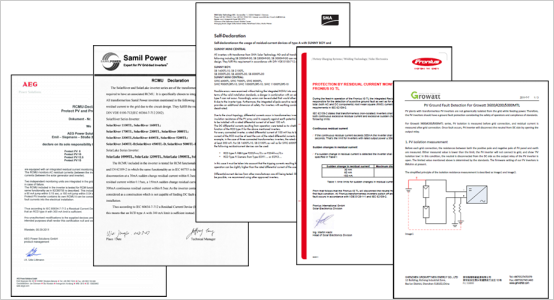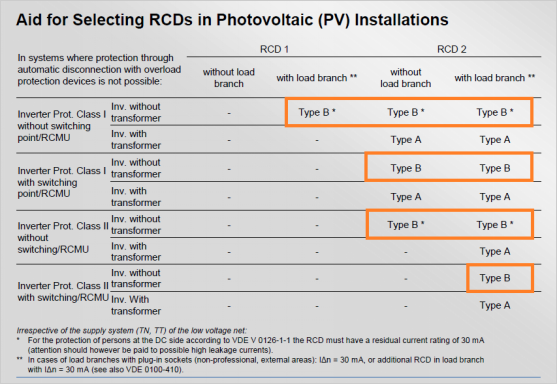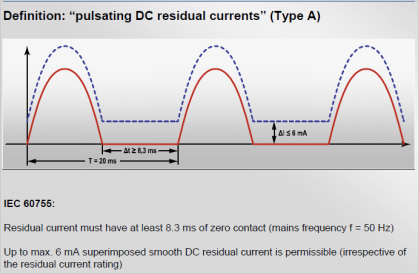According to the new data from GTMResearch Consulting, as of July 2017, the cumulative installed capacity of photovoltaics in the world is about 390GW; the cumulative installed capacity of PV in China has reached 112.34GW. In the first seven months of this year, China's photovoltaics added 34.92 GW of grid connection, and in July alone, PV grid connection reached 10.5 GW. The proportion of distributed photovoltaic power generation systems and household photovoltaic power generation systems is rapidly increasing.
In the second half of the year, the domestic market not only has a 5GW “Leader Plan 9.30†grid connection requirement, but also a 4GW indicator for the poverty alleviation plan during the year. In the context of the increasing demand for distributed home PV system installations, how to better protect the safety of home-based distributed photovoltaic power generation systems is once again raised.
If there is excessive leakage current in the photovoltaic system, the hazard will be very serious. The light photovoltaic power generation system has a downtime, and even the self-ignition of the entire photovoltaic power generation system may occur. It poses a great threat to the property and life safety of the owner.
To this end, all PV inverter manufacturers at home and abroad have added a B-type leakage current detection module (RCMU) inside the inverter to improve the safety of the photovoltaic power generation system. The following figure is a statement issued by the PV inverter manufacturer for the Type B Leakage Current Detection Module (RCMU):

But is the photovoltaic inverter added with a B-type leakage current detection module, is the entire distributed photovoltaic power generation system safe enough? With this question, let's first understand the classification of leakage current:
AC leakage: 50Hz power frequency
Type A leakage: 50Hz power frequency + rectified half wave
B-type leakage: 50Hz power frequency + rectified half-wave + smooth DC + pulsating DC

It can be seen from the above figure that the composition of the B-type leakage is complicated, and the damage caused by the leakage of the B-type will also be great.
Next, let's take a look at the possible components of the leakage current of the (wide) distributed photovoltaic system:
The leakage current of the entire distributed photovoltaic system is equal to the inverter switching frequency and the AC component (50 Hz) determined by the EMC filter (usually 16 -22 kHz) plus the algebraic sum of the DC component and the high frequency component.

As shown in the figure above, the magnitude and form of the residual current vary with the DC content. Therefore, regardless of whether the inverter has a B-type RCMU in the PV system, as long as there is no transformer in the system, a B-type RCCB must be added externally.
Whether the transformer has the main difference is with and without isolation. The isolated inverter transformer can isolate the main circuit from the grid, which can prevent DC from entering the grid and reduce the influence of harmonics on the grid. Both the grid and the inverter are It is a good thing, it plays a certain protective role, and it also has the effect of voltage regulation.
However, in practical applications, the efficiency of the system without the inverter transformer is slightly higher than that of the transformer. Therefore, the current photovoltaic system rarely has an inverter transformer. In this application, the leakage current of the distributed photovoltaic system is There are AC and DC components, and it is very necessary to choose B-type RCCB for safety.

However, the author used more than one year to investigate and study the installation examples of distributed photovoltaic power generation systems at home and abroad. It was found that although the specifications and guidance for photovoltaic installation of distributed power plants have been promulgated for many years, in the actual operation and operation of power plants at home and abroad, There are still many confusing uses of Type A RCCB and Type B RCCB. Domestic PV power plants are still mostly using AC-type leakage protection RCCB.
Because the PV installer regards the PV inverter as a separate unit and thinks that the inverter already contains the Type B RCMU, the external is not needed, which is obviously not considered.
The most common safety hazard is due to various types of leakage generated anywhere in the system. If you can't properly select and install the appropriate leakage protection RCCB, this will pose a threat to your property and even your life for PV system installers and owners on site!
The preface of the IEE Cabling Guidelines (BS7671) clearly states: “All PV components must be adhered to as part of the system when they are used.†After the electrical installer understands the interaction points of the various product applications in the installation, the relevant Design, selection, build and debug. This basic principle clearly stipulates that engineers consider photovoltaic installations as a complete system rather than treating individual components as separate components.
How should we correctly choose the leakage protection switch for distributed photovoltaic systems?
First, we have a basic understanding of the differences between A and B RCCBs.
1) Type A RCCB EN61008-1
Suitable for sinusoidal AC at fixed frequency (50Hz) and pulsating DC with maximum DC content <6mA (as shown below). They do not sense AC residual current at frequencies above their nominal design frequency, and if more than 6 mA of DC flows through RCCB, the trip characteristic will be due to the saturation effect of the DC current on the Type A sensing coil. Will change. As the DC current increases, the trip time will increase until the coil is fully saturated and the RCCB does not work at all.


2) Type B RCCB: IEC60755 / IEC62423 Additional requirements:
When the residual current present cannot be detected by the Type A RCCB, the Type B RCCB must be used. Please note that due to existing standards, you will need to refer to separate manufacturer data to obtain the Trip Characteristics - Current / Frequency Range to check if the Type B RCCB is capable of detecting the full range of residual current present in the installation. - See IEC60479 for current/frequency effects on the human body.
The concept of IΔn, the threshold value of the leakage current trip value, is introduced here, and the set value varies depending on the field. The protection threshold is set to the maximum in the fire protection, generally 300mA; then the insulation protection, the threshold is set at 30mA; then the contact leakage protection, the threshold is 10mA~20mA; the last is the new magnetic detection protection, The threshold is 6mA/DC

The distributed photovoltaic power generation system is a whole (not limited to photovoltaic inverters). RCCB is a device that protects the entire system. It is different from the RCMU inside the inverter and must be used within the design range.
In summary, in order to more effectively improve the safety of distributed photovoltaic power generation systems and prevent leakage currents from posing to owners' property and life threats, Type B leakage protection RCCB is a safer option.
Magtron's overall solution for SoC chips based on iFluxgate technology has digitally integrated B-type leakage protection, breaking the technological monopoly of European and American companies on the electronic part of B-type leakage protection RCCB, and upgrading RCCB from traditional A-type to B-type technology. Provides a cost-effective B-type leakage solution. It provides a higher guarantee for the safety of distributed photovoltaic power generation systems. (Author: John Fang)
references:
1) IEE Wiring Regulations up to and including Dec 2011 for installations made in 2011
2) Electrical Safety Council Best Practice Guide for SSEGs
3) Microgeneration Installation Standard MIS3002
4) Engineering Recommendation G83-1-1
Pneumatic Fender,Grey Color Pneumatic Fenders,Grey Fenders,Grey Boat Fenders
Shandong Nanhai Airbag Engineering Co., Ltd. , https://www.nanhaimarine.com
